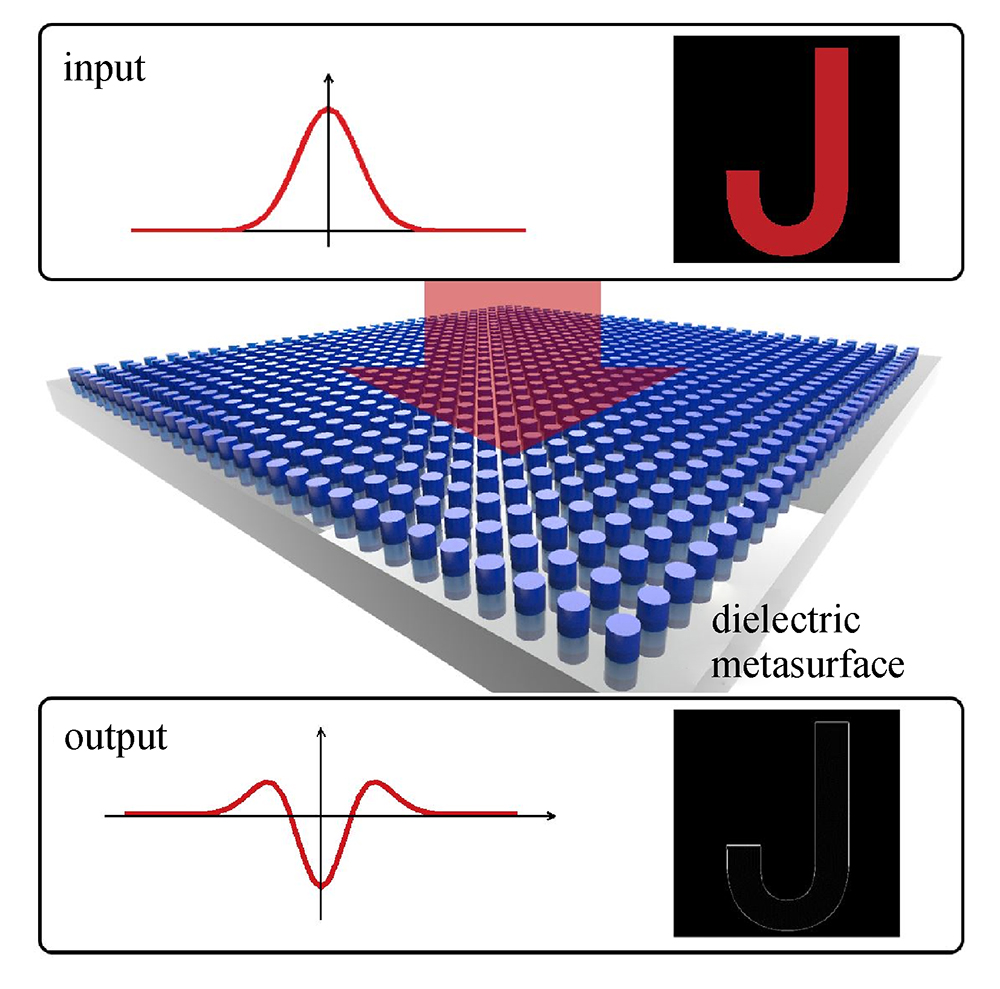Recently, we proposed a single-layer metasurface of silicon nanodisks to realize spatial differentiation and edge detection with high efficiency and large bandwidth for both polarizations. The proposed metasurface supports electric dipole resonance, and its spatial dispersion can be effectively tailored for specific OTF [
48]. Figure 6(a) presents the basic morphology of the device, which allowed the direct transmission of diffracted light with large wave numbers from the edges of the character U, and blocked those with small incident angles from the uniform area, leading to the realization of spatial differentiation and edge detection. By tailoring the spatial dispersion of the electric dipole resonance, the scattered power of the plane wave could be dramatically reduced when the incident angle was increased at the wavelength of 630 nm. In contrast, the scattering behavior of the magnetic dipole exhibited an approximately constant trend, as displayed in Fig. 6(b). Benefiting from the mechanism of electric dipole resonance, high transmission at the incident angle of 15° was obtained, which enabled the achievement of second-order derivation with large spatial bandwidth in the transmission mode. In fact, the working efficiency is important. For the reflection mode, the metal sheet behind the metasurface could guarantee a reflection larger than 60% at the critical spatial frequency of the device bandwidth [
33,
46,
52]. However, for the transmission mode, the absorption of metal could greatly reduce the maximum transmission down to about 36% [
63,
64]. In contrast, dielectric metasurface can increase the maximum transmission. In the case of neglecting material absorption, the transmission can theoretically approach to one. When silicon material with loss was considered, it could still maintain about 80% [
38,
47,
48,
64]. As seen in Figs. 6(c) and 6(d), the dielectric metasurfaces displayed excellent transmission properties along the two orthogonal directions of the 2D OTF images corresponding to
s- and
p-polarized waves. Complementary OTF characteristics at both polarizations confirmed the realization of second-order spatial differentiation and edge detection for an arbitrary polarization. To demonstrate the effectiveness, the logo of Jinan University as the input image was chosen to observe the output results of the designed metasurfaces for
x-polarized and unpolarized light illumination, as illustrated in Figs. 6(e) and 6(f), respectively. Given that the nanodisk was isotropic, the results of edge detection corresponding to both polarizations exhibited similar features. The large spatial bandwidth and polarization-independent characteristics demonstrated the capability of the designed second-order spatial differentiator in high-performance edge detection.










